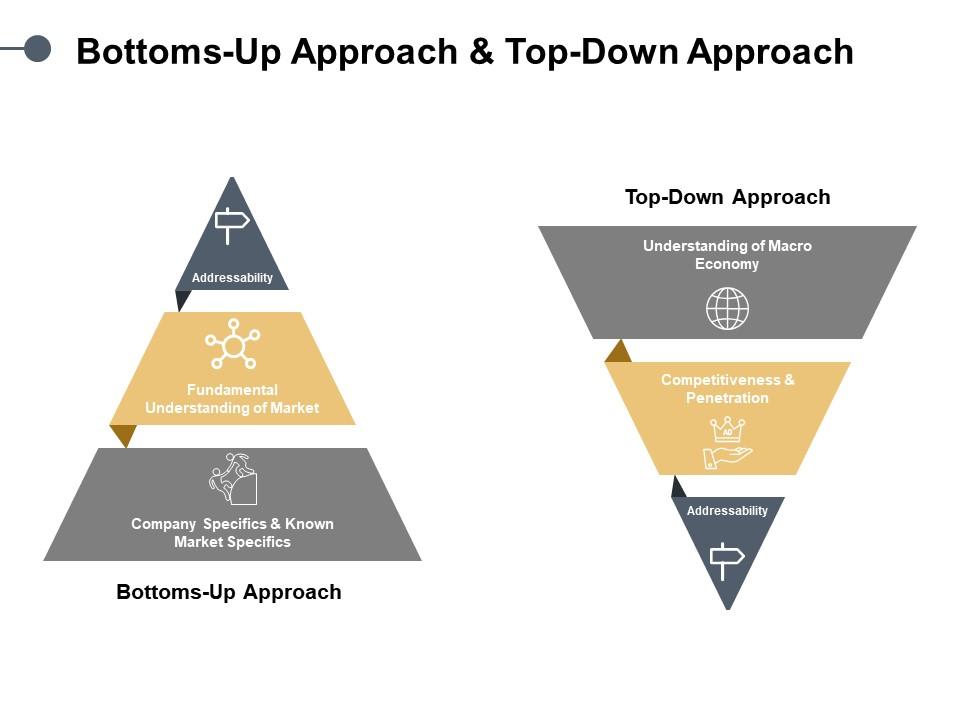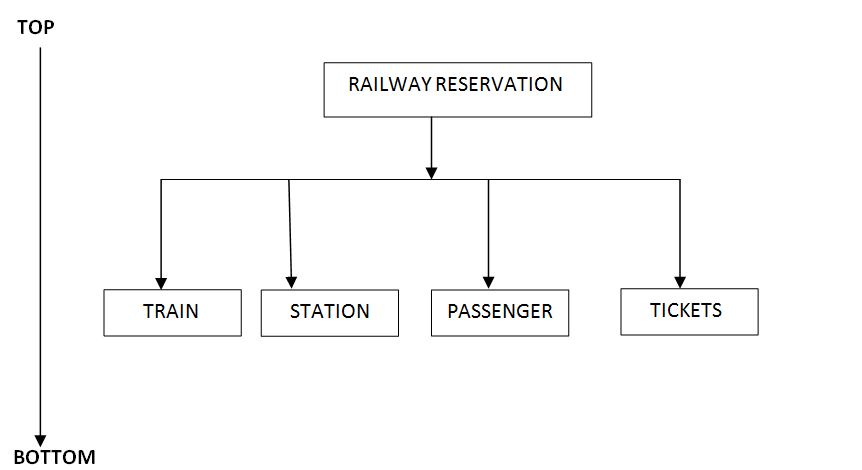Table Of Content

Whether you prefer to lead from the top or believe in empowering your team from the bottom, ClickUp’s Project Management tool is the ultimate weapon you need to make your team more efficient. ClickUp is more than a project management software; it’s a one-stop platform where all your work, projects, and teams come together without needing multiple apps. For any product team, the top-down and bottom-up approaches are crucial strategies.
Top-Down Design — an Approach for Flawless Software Design and Implementation
Top down design evolved from designers making assembly references from one part to another, where upon, submission to PDM tools of the time filled up the relatively small hard drives (circa 1993). System Administrators or SYSOP’s, basically managers of working & production PDM database models, became frustrated that the database was filling up quickly because of all the references. They also became frustrated that users created circular references within assemblies. This feature and subsequent part was first new in v20 of Pro/ENGINEER (circa 1998). In practical terms, this means that the project leader or manager takes charge, analyzing the project as a whole and breaking it down into smaller, manageable tasks. Like our chief architect, they set the goals, allocate resources, and define the project’s overall structure.

Can you give an example of Top Down Design in action?
In a bottom-up approaches, the team members actively participate in decision-making. They share their insights, skills, and suggestions, and the project gradually takes shape based on their collective input. Each friend suggests a unique feature for our treehouse project, like a rope ladder or a cozy reading nook. The final design emerges through a collaborative effort, with contributions from everyone involved. Creating a medium to large software project requires good planning, especially when working in a team.
Combining approaches
The top-down approach is used to maintain strategic alignment, control, and consistency across an organization. It effectively manages large-scale projects, ensures compliance with regulations, and implements clear and unified organizational goals. When choosing the best approach, consider a hybrid approach that combines top-down and bottom-up elements. Many successful organizations find that a balance of these approaches allows them to benefit from structured strategic alignment while also capitalizing on their employees' innovative potential.
Advantages of top-down management
7 Data Modeling Techniques and Concepts for Business - TechTarget
7 Data Modeling Techniques and Concepts for Business.
Posted: Fri, 30 Jul 2021 07:00:00 GMT [source]
The requirement of the user’s personally identifiable information should be fetched from another system. Here again, a nonfunctional requirement of security and performance are in the scope. In an eLearning application, generating progress reports for students can be a theme of requirement.
Educational Program Design
Build new channels for bottom-up feedback to not only increase buy-in with lower-level team members, but also give decision-makers valuable insight into gaps or issues with processes. The key to implementing a management approach that works is to invest in your people as much as you do in your processes. The challenges of the top-down management approach can be alleviated or even eliminated entirely if the people at the top of the process aren’t just good managers, but are leaders too. The top-down management style is common, which means there’s less of a learning curve for new hires if they came from a company that uses this structure. As a team leader, you can help new team members adjust more quickly by incorporating some familiar elements of top-down methodology into your management style. To improve your top-down design skills, start by practicing breaking down problems into smaller parts.
The importance of Top Down Design in programming cannot be overstated. By setting the big picture first, you can ensure that all the smaller parts work together seamlessly. This approach saves time, reduces errors, and makes your code more organized and easier to understand. Brief History of Top Down DesignBottom–up / top–down Both strategies of information processing and ordering knowledge, used in a variety of fields including engineering made popular by PTC with Creo as early as 1990. Regularly evaluate the effectiveness of your chosen approach and be prepared to adapt based on team composition, project requirements, or external factors.
It is important to consider non-functional requirements like security and performance as well at each stage. It will ensure the system designed performs at higher load or required load and secure. For example, in the above list user, course, exams, grades are all different systems on their own. Reports modules will have to interact with all these systems to get the data required for the report.
Is Top Down Design the only programming approach?
While the bottom-up approach fosters innovation and team engagement, striking a balance is crucial. It’s like ensuring that while building the treehouse, there’s still a sturdy trunk and branches to support all those exciting additions suggested by the team. Then groups of relation functions are tested together to verify that their interfaces work as designed and the results are correct. These may be corrections in the software or the design or sometimes the requirements need to be adjusted/clarified.
In collaborative settings, those who work directly on projects and oversee project management can speak to the decisions that will impact their future work. Upper managers work directly with team members to chart a course of action, which prevents potential process blind spots that might otherwise appear when decisions are made without team input. The bottom-up style of management solves many of the problems that come with the top-down approach. This approach has advantages that make it a great fit for creative teams and industries where collaboration is key, like software development, product design, and more.

Top Down Design is like constructing a building; you start with the blueprint and work downwards. Bottom Up Design, on the other hand, is akin to building blocks; you begin with the foundation and stack upwards. Both have their merits, but the key lies in choosing the right approach for the task at hand.
Any relationship governing the interface between two (or more) components—such as a press fit or gear spacing—should be included in the master. It is also common for the master to include curves that define the outside envelope of the product. Yes, Top Down Design can be combined with other programming methodologies based on the project requirements.
Each approach has its strengths and weaknesses depending on the project requirements. Using Top Down Design, you would first outline the main features like setting reminders, displaying notifications, and managing user preferences. Then, you’d break these down into smaller functions like setReminder(), displayNotification(), and managePreferences(). In Top Down Design, you then define functions for each of your sub-problems. Functions act like specialized tools; they perform specific tasks efficiently. By breaking your code into functions, you maintain clarity, promote reusability, and make debugging a breeze.
After finalizing the initiatives, the board and the product leaders might want to hold a workshop to brainstorm features that fit into each objective. With all communication flowing from leaders to team members with little room for dialogue, the top-down approach allows fewer opportunities for creative collaboration. Less interdepartmental collaboration may also eliminate fresh perspectives and stifle innovation. Top-down design helps in organizing and structuring your code in a logical and easy-to-understand manner.
This article explores these two management styles, delving into their characteristics, the environments in which they thrive, and the outcomes they typically produce. This program demonstrates a top-down design approach by breaking down the game into smaller, manageable functions that represent different sections of the adventure. Firstly, the main() function acts as the entry point and orchestrates the flow of the game. Ask_player_name() interacts with the player and retrieves their name, which is then used by other functions. Start_adventure() prompts the player to make a decision that determines the course of their journey. Based on the decision, either explore_cave() or trek_forest() is called, each representing a different path in the adventure with simple binary outcomes.The design is modular, allowing for easy maintenance and clear structure.
With clearly defined teams that each have their own separate responsibilities, it’s easier to locate, diagnose, and solve problems quickly and efficiently. Many teams go with the top-down approach because it eliminates confusion, reduces risk, and keeps initiatives organized across larger teams. Below, we break down how the top-down approach compares to the bottom-up approach so you can decide which best fits your leadership style.


No comments:
Post a Comment